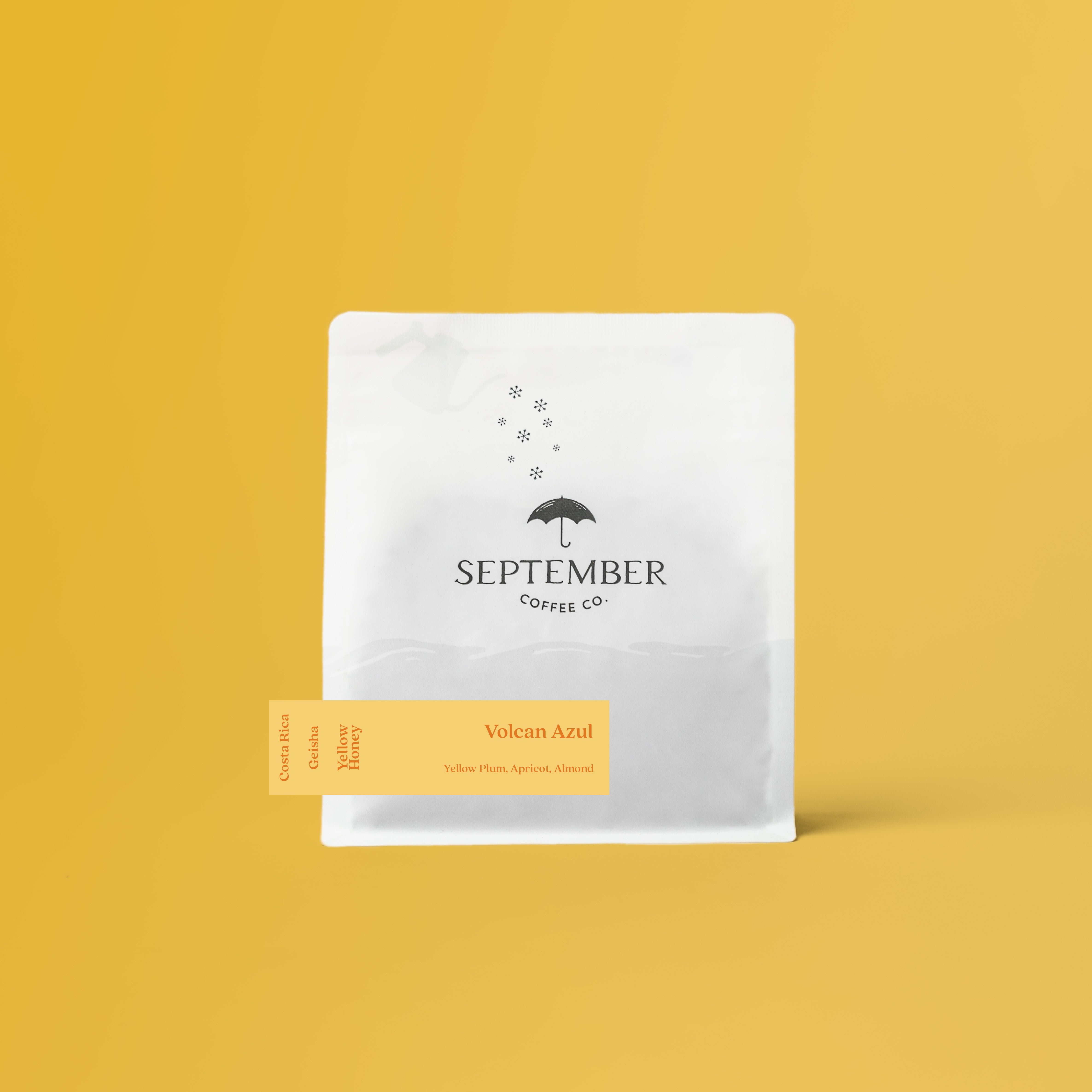

Volcan Azul - Geisha Yellow Honey
This coffee is from our friend and widely respected producer, Alejo Castro. Volcan Azul is a Cup of Excellence winning farm, and Alejo produces some of the nicest coffee from Costa Rica. This Geisha is deeply sweet with a stone fruit acidity and a profile that reminds us of yellow plums and apricots.
200G
Volcan Azul - Geisha Yellow Honey
September Coffee Roastery
119 Iber Road
Unit 9
Ottawa ON K2S 1E7
Canada
- Variety: Geisha
- Country: Costa Rica
- Region: Poás Volcano, Alajuela
- Process: Yellow Honey
- Altitude: 1500 MASL
- Harvest: 2025
- Producer: Alejo Castro
- Farm: Volcan Azul
- Roast Level: Light
 In the cup
In the cup
We taste juicy yellow plums and apricots. This coffee has a jammy "yellow" sweetness and a silky body with a candy like sweet finish.
 Funky
Funky
 Experimental
Experimental
 About The Producer
About The Producer
Alejo Castro is the fifth-generation descendant of renowned coffee pioneers Alejo C. Jimenez and Wilhelm Kahle. Alejo's ancestors planted some of the first specialty coffee plantations in the early 1900s with the aim to produce the best coffee in the world. With over 200 years of family tradition in trading specialty coffee, Alejo's mission for the farm has been exclusively focused on improving coffee quality while making a positive impact on the environment. The highly fertile volcanic soil combined with the mill's impeccable processing methods has produced a history of award - winning coffees in Costa Rica.
 Processing
Processing
The coffee cherries are partially depulped, leaving some mucilage on the beans. They are then dried on raised beds in the sun until they reach 11% moisture. The process begins long before drying, with coffee cherries diligently measured for sugar content (measured in brix) to ensure optimal ripeness at harvest. Once picked, a mechanical washer removes around 50% of the mucilage before drying. Beans are spread on raised beds and covered, reflecting Volcan Azul’s deep commitment to quality from seed to cup.
 Variety
Variety
This variety was originally collected from coffee forests in Ethiopia in the 1930s. From there, it was sent to the Lyamungu research station in Tanzania, and then brought to Centro Agronómico Tropical de Investigación y Enseñanza (CATIE) in Central America in the 1953, where it was logged as accession T2722. It was distributed throughout Panama via CATIE in the 1960s after it had been recognized for tolerance to coffee leaf rust. However, the plant's branches were brittle and not favored by farmers so it was not widely planted. The coffee came to prominence in 2005 when the Peterson family of Boquete, Panama, entered it into the "Best of Panama" competition and auction. It received exceptionally high marks and broke the then-record for green coffee auction prices, selling for over $20/pound.There is significant confusion about Geisha because there are multiple genetically distinct plant types that have been referred to as Geisha, many of which share similar geographic origins in Ethiopia. Recent genetic diversity analyses conducted by World Coffee Research confirm that Panamanian Geisha descendent from T2722 is distinct and uniform. It is associated with extremely high cup quality when the plants are managed well at high altitude, and is known for its delicate floral, jasmine, and peach-like aromas.
